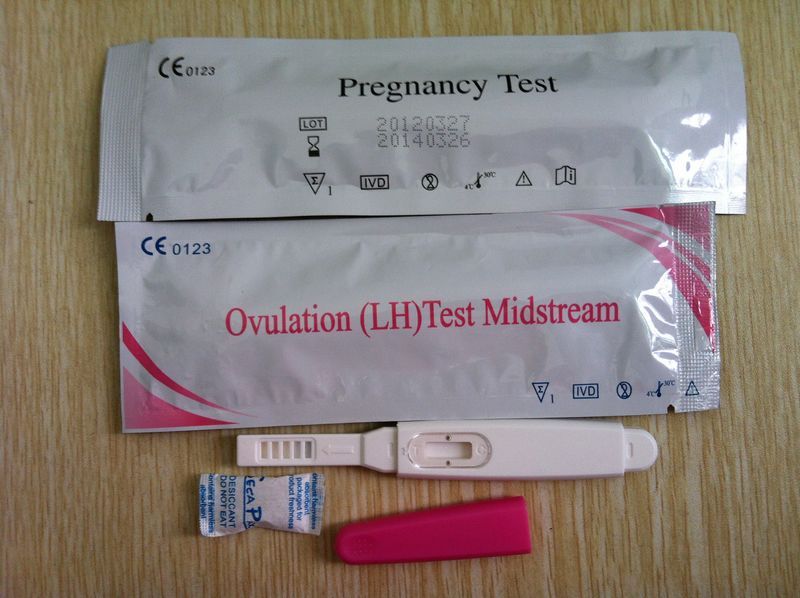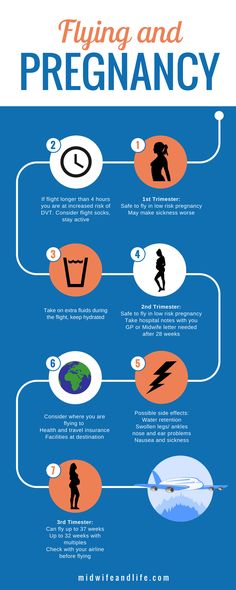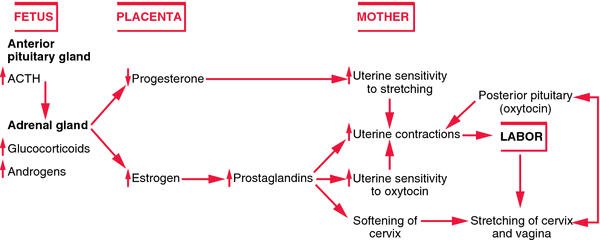How to test iq level of child
IQ Tests and Your Child
If you suspect a problem at school or your child complains that he or she is bored or unchallenged in class, it might be beneficial have evidence of his or her learning capacity. The results may help you better understand your child’s specific strengths, weaknesses and potential ability. They also may help your child’s teacher recognize the level of reasoning, knowledge, and skills your child has already mastered so as to appropriately match curriculum and instruction to your child’s abilities. Please visit our site to learn more about assessment.
SHOULD MY CHILD HAVE AN IQ TEST?
If your child is challenged by the learning environment in which he or she is currently placed, there is little reason for requesting additional testing. The teachers in the school are responding to your child’s characteristics and an IQ score will do little to enhance his or her education. On the other hand, if you suspect a problem at school or your child complains that he or she is bored or unchallenged in class, it might be beneficial have evidence of his or her learning capacity. In addition, IQ testing may be helpful in gaining admission to educational opportunities that are available only to students with a demonstrated level of aptitude.
WHAT CAN AN IQ TEST TELL ME ABOUT MY CHILD?
IQ tests assess general intellectual ability, which comprises verbal and logical thinking skills in the most traditional sense. General intellectual ability, as reflected in IQ scores, is the best overall predictor of school achievement and educational success; hence intelligence tests are often one of the assessments used to identify exceptional general intellectual ability in children.
Because it assesses specific logical, spatial, memory, and verbal skills, IQ testing can be helpful if your child is having a problem in school. The results can help determine if your child is underachieving given his or her level of potential or, possibly, suggest the need for further evaluation of a potential learning disability.
WHAT WILL IT NOT TELL ME?
Experts agree that intelligence is multi-faceted, displayed in many different ways, and multiple measures should be used when assessing for giftedness. And although helpful in understanding specific cognitive abilities, an IQ score alone does not determine a student’s educational needs, the curriculum most appropriate for him or her, or whether or not he or she will be a good fit for a particular program. For these reasons, IQ testing should only comprise one part of any process for identifying gifted children.
And although helpful in understanding specific cognitive abilities, an IQ score alone does not determine a student’s educational needs, the curriculum most appropriate for him or her, or whether or not he or she will be a good fit for a particular program. For these reasons, IQ testing should only comprise one part of any process for identifying gifted children.
TYPES OF IQ TESTS
Individualized intelligence tests take considerable time to administer and interpret, but they provide the most comprehensive information about overall general aptitude. They must be administered by licensed psychologists or psychometricians. Group intelligence tests often underestimate the scores received on individual tests. If you are requesting that your child be assessed, request that a school psychologist administer an individualized test.
The most widely used individual IQ tests for school-aged youngsters, and the most valid and reliable of the measures are the Wechsler Intelligence Scale for Children – Fifth Edition (WISC-V), the Wechsler Preschool and Primary Scale of Intelligence – Fourth Edition (WPPSI-IV) and the Stanford Binet Intelligence Scales.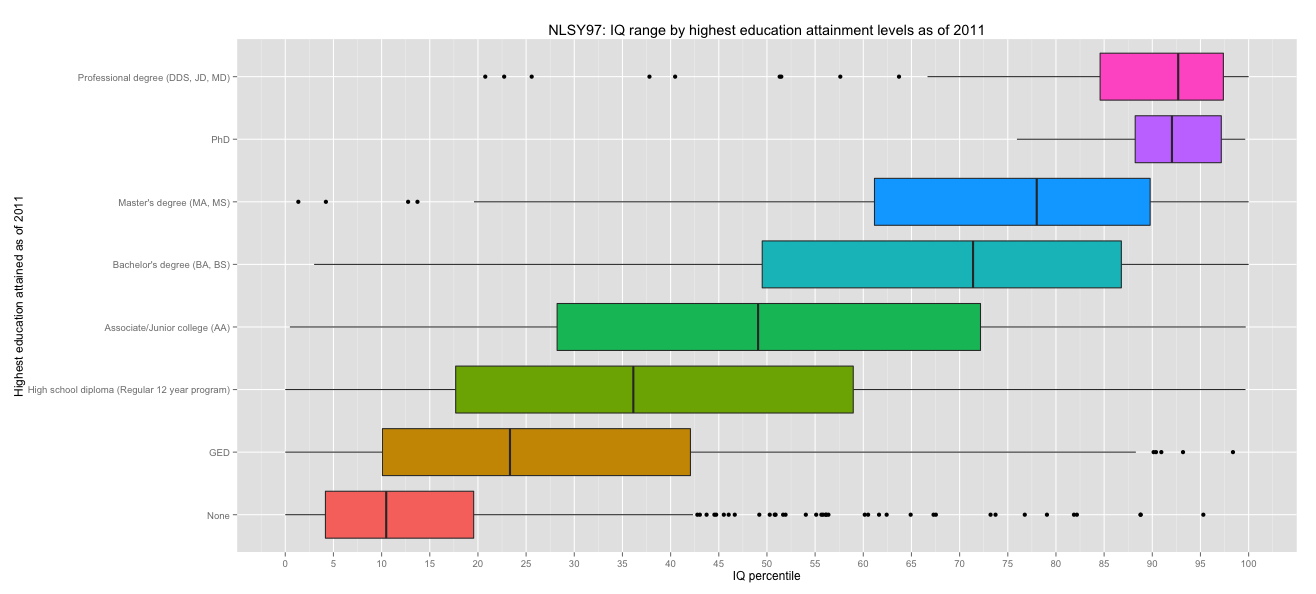
WHAT ARE THESE TESTS LIKE? WHAT WILL THE SCORES MEAN?
Individual IQ tests do not require reading or writing, and each consists of a series of subtests. Some are verbal subtests that are oral questions, usually without time limits. Other subtests are generally visual or spatial in nature, and usually are timed. The test takes about 1 to 2 hours to administer.
The psychologist will use subtest scores to identify relatively weak or strong areas of performance (e.g., verbal ability as manifested by vocabulary or mathematical reasoning ability).
The “Full Scale” or “Composite” IQ score based on all or most of the subtests, is the number most people are referring to when discussing someone’s IQ. (Unless otherwise specified, when “IQ” is mentioned in this column, it will mean Full Scale IQ.)
The developers of IQ tests use mathematical calculations to find the mean or average score. An IQ score from 90 to 110 is generally considered average, corresponding to roughly the middle 50 percent of the population.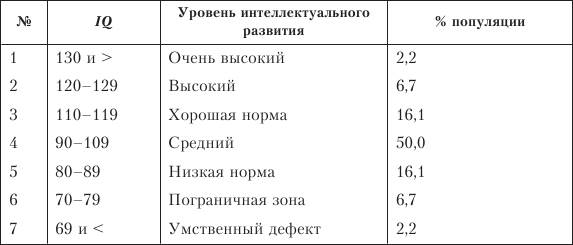 If we just look at the scores at the high end, 2-3 percent of the population will have IQ scores above 130. An IQ score of 145 should occur 0.1 percent of the time or one time in 1,000.
If we just look at the scores at the high end, 2-3 percent of the population will have IQ scores above 130. An IQ score of 145 should occur 0.1 percent of the time or one time in 1,000.
No IQ score should be considered an exact measure of intellectual ability. For example, good guesses may artificially increase an IQ estimate or having a bad day may decrease the estimate. There are many factors that might make an individual score vary a little from one occasion to another on any test. These include anxiety, motivation, rapport with the examiner, and guessing. Hence, psychologists will most often present a range of scores. A psychologist is likely to say, “Your child’s IQ falls in the range 123-137. This is the exceptional range.” This range takes into account the random error of testing.
A WISC IQ score will not be the same as a SB IQ because the test items are different, the children to whom your child is compared are different, and the ideas that underlie the construction of the test differ. However, the scores are highly correlated. That is, children who earn higher scores on one test tend to earn higher scores on the other. Individuals with the same IQ are still very different people, with different strengths and weaknesses, behaviors, and personalities. A child’s IQ score tells us about only one dimension of a person. IQ is not the best measure or predictor for everyone or for all success measures. IQ tests do not measure creativity, leadership, initiative, curiosity, commitment, artistic skill, musical talent, social skills, emotional well-being, or physical prowess – all components which can be included in definitions of giftedness. There is considerable evidence that students who are economically disadvantaged, from ethnic minorities, and/or speak English as a second language generally receive a lower score on IQ tests. This is a fault in the tests, not the students.
However, the scores are highly correlated. That is, children who earn higher scores on one test tend to earn higher scores on the other. Individuals with the same IQ are still very different people, with different strengths and weaknesses, behaviors, and personalities. A child’s IQ score tells us about only one dimension of a person. IQ is not the best measure or predictor for everyone or for all success measures. IQ tests do not measure creativity, leadership, initiative, curiosity, commitment, artistic skill, musical talent, social skills, emotional well-being, or physical prowess – all components which can be included in definitions of giftedness. There is considerable evidence that students who are economically disadvantaged, from ethnic minorities, and/or speak English as a second language generally receive a lower score on IQ tests. This is a fault in the tests, not the students.
Full-scale scores on an IQ test may be lower for a gifted student who also has a learning disability; however a trained psychologist will be likely to see discrepancies in performance on the sub-scales, which may suggest a possible learning disability.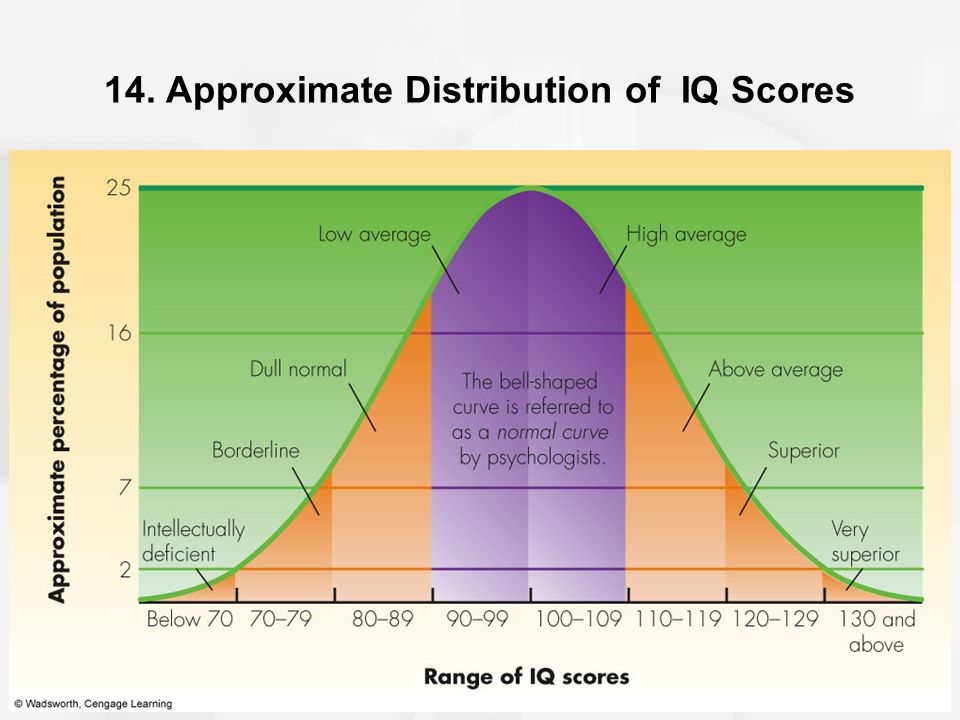
WHAT CAN I EXPECT AS A RESULT OF TESTING?
The results may help you better understand your child’s specific strengths, weaknesses and potential ability. They also may help your child’s teacher recognize the level of reasoning, knowledge, and skills your child has already mastered so as to appropriately match curriculum and instruction to your child’s abilities. The results may also be used by a teacher or other school administrator as the basis for admission to a program for children with similar abilities or interests.
It is also possible that nothing changes for your child as a result of the testing; the outcome is different for every family, and every school with which they are working.
HOW CAN I HELP PREPARE MY CHILD FOR TESTING?
The best ways to help prepare your child for the testing experience include:
• Relaxing. If you are nervous, your child will be too.
• Explaining that the session will involve puzzles and games and most kids find it really fun.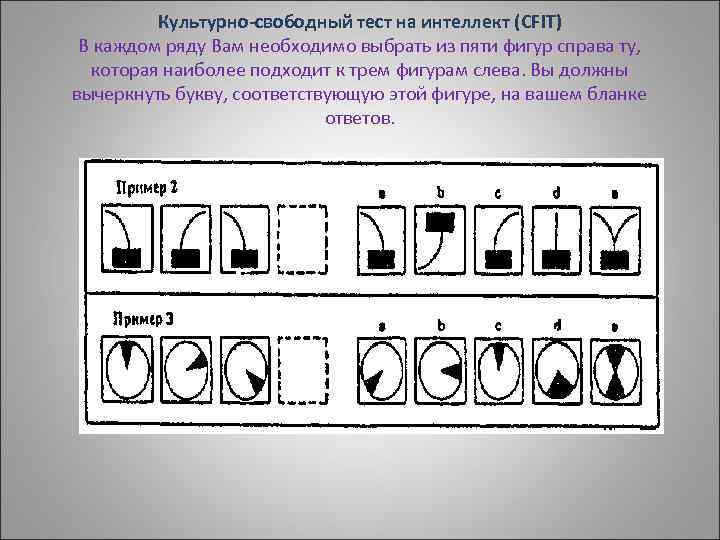
• Noting that the psychologist wants to see how he/she likes to solve problems, so they should just try their best, and feel free to guess if they don’t know the answer.
• Ensuring he/she gets a good night’s sleep the night before and eats a healthy breakfast the day of the test
• After the test, praising his/her effort and allowing some down time. The testing experience can be mentally taxing for some children.
Please do not try to prepare your child by presenting him or her with questions from the IQ test.
These tests are designed to present children with unfamiliar types of problems to see how well they adapt. Therefore, exposing your child to test content would make the testing completely invalid, and he or she would not be able to take another one for at least a year due to the likelihood of remembering items. If your child has taken an IQ test within the past 12 months, please let us know as soon as possible. Also, refrain from offering your child a reward or prize for earning a certain score; instead, praise effort and engagement in the testing session.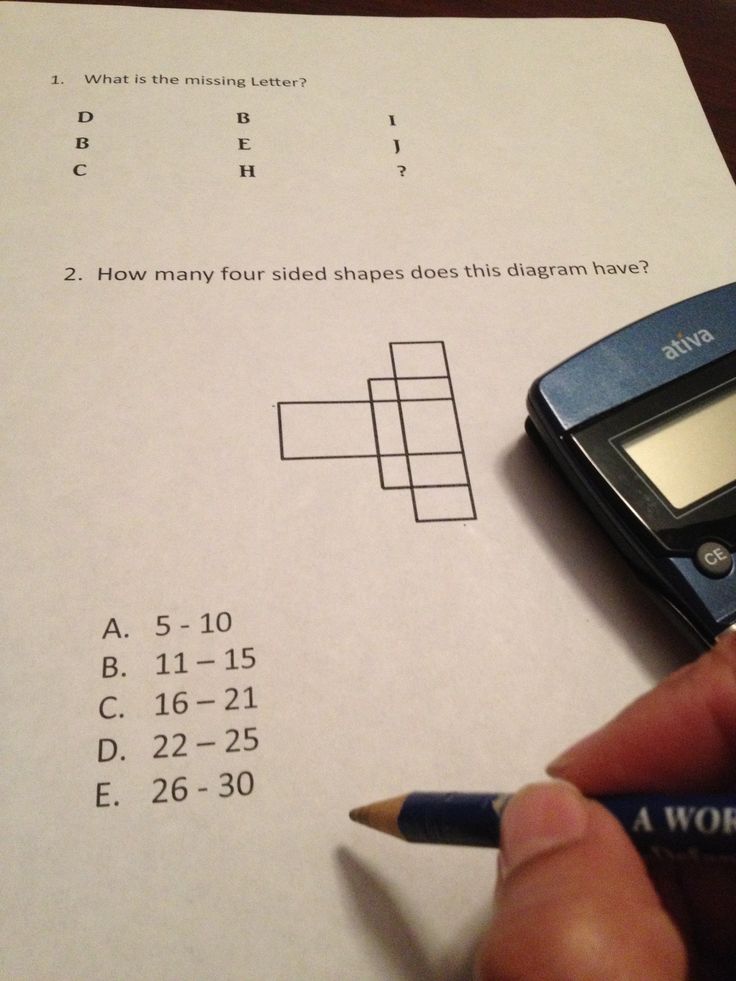
Reference: Callahan, C. M. & Eichner, H. (2010). I.Q. Tests and your child. Washington D.C.: National
Association of Gifted Children. Retrieved October 18, 2010 from
http://www.nagc.org/index.aspx?id=960
What Are Intelligence Tests? - MGH Clay Center for Young Healthy Minds
© iStockphoto | BrianAJackson
By Ellen Braaten, PhD
Posted in: Grade School, Pre-School, Teenagers, Young Adults
Topics: Child + Adolescent Development, Learning + Attention Issues
Probably no other single area of evaluation has seen more controversy than that of intelligence. Psychologists have debated whether intelligence is learned or inherited, culturally-specific or universal, one ability or several. These debates are ongoing, and won’t soon be resolved. For the purpose of this blog, I’ll discuss intelligence as it relates to a child’s score on an IQ test.
Efforts to measure intelligence have long been a part of psychology. Although still surrounded by controversy, IQ tests are the most studied, and consequently, the most reliable, valid and useful tests available. Within a test, people tend to perform the same on items designed to assess the same ability, thus suggesting internal consistency. They are reliable because people will generally get the same score when they retake the same test years later. Studies that have compared children’s IQ scores with their performance in school have found that IQ and school performance are highly correlated. That is, such tests are one of the best single indices of how well a child will do in school. Having said that, IQ tests are not the sole factor for determining how a person will eventually function in society, as other variables, such as parenting, quality of schooling, motivation and exposure to culture and books, are also important determinants of success in life.
Although still surrounded by controversy, IQ tests are the most studied, and consequently, the most reliable, valid and useful tests available. Within a test, people tend to perform the same on items designed to assess the same ability, thus suggesting internal consistency. They are reliable because people will generally get the same score when they retake the same test years later. Studies that have compared children’s IQ scores with their performance in school have found that IQ and school performance are highly correlated. That is, such tests are one of the best single indices of how well a child will do in school. Having said that, IQ tests are not the sole factor for determining how a person will eventually function in society, as other variables, such as parenting, quality of schooling, motivation and exposure to culture and books, are also important determinants of success in life.
An IQ score reflects a person’s performance on an intelligence test relative to that of persons of the same age. In other words, a child’s IQ score tells you the extent to which his or her performance on the test departs from average.
In other words, a child’s IQ score tells you the extent to which his or her performance on the test departs from average.
Nearly all comprehensive evaluations include some measure of intelligence. For example, in the case of a child who is being tested for dyslexia, an intelligence test can determine that the child’s academic difficulties don’t come from a specific cognitive weakness. In fact, an intelligence test is necessary in most cases to diagnose a specific learning disability.
Despite their limitations, IQ tests are the best measure we have of a person’s abilities in a variety of areas. IQ tests are composed of sub-tests that measure more specific abilities. Scores on these sub-tests are combined to yield measures of verbal and nonverbal abilities, processing speed and working memory, as well as a Full Scale IQ score.
The most common IQ tests for children include the following:
Wechsler Intelligence Scale for Children – Fourth Edition (WISC-IV) and Fifth Edition (WISC-V)
The Wechsler Intelligence Scale for Children is the most widely used test of intelligence for children aged 6 through 16 years.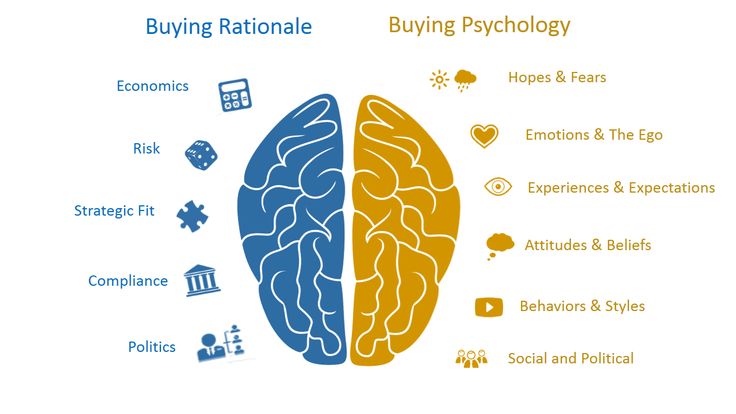 There are currently two different editions of the WISC. The WISC-V is the newest version, and became available in the fall of 2014. It’s important to note that it can take a year from publication of a new version of the WISC for professionals to become trained on it; however, don’t expect to see the WISC-IV in use much after 2015.
There are currently two different editions of the WISC. The WISC-V is the newest version, and became available in the fall of 2014. It’s important to note that it can take a year from publication of a new version of the WISC for professionals to become trained on it; however, don’t expect to see the WISC-IV in use much after 2015.
The WISC-V includes numerous sub-tests, and yields a Full Scale IQ score. It also yields five “Factor Scores,” which measure different dimensions of functioning. These factors include verbal comprehension, visual-spatial, fluid reasoning, processing speed and working memory. These factors reflect a child’s performance on meaningful dimensions of mental ability, and provide useful information regarding a child’s learning style.
- The verbal comprehension factor measures children’s verbal knowledge, and their ability to use their verbal skills in new situations. Scores on this factor are also a reflection of a child’s educational and home environments.
 In other words, if a child is surrounded by an environment that is verbally-enriched, he or she will likely do better on this factor.
In other words, if a child is surrounded by an environment that is verbally-enriched, he or she will likely do better on this factor. - The visual-spatial factor is designed to measure nonverbal concept formation, visual perception and organization, simultaneous processing, visual-motor coordination, learning and the ability to separate figure and ground in visual stimuli.
- The fluid reasoning factor measures the ability to detect underlying conceptual relationships among visual objects, and to use reasoning to identify and apply rules.
- Processing speed measures the speed at which children can process simple visual information, such as abstract designs or numbers, without making mistakes. Although it is not a measure of a child’s ability to think or reason, difficulty in processing simple information (e.g., copying symbols or letters or quickly scanning a worksheet for mistakes) leaves a child with less time and mental energy to understand and process new material.

- Working memory is an indication of a child’s ability to hold information in memory so that he or she can manipulate it, or perform calculations with it. It includes the ability to do mental arithmetic, and can be affected by poor attention.
Wechsler Adult Intelligence Scale – Fourth Edition (WAIS-IV)
The WAIS-IV is the most commonly used test of intelligence for persons aged 16 through 75 years, and may be the intelligence test chosen if your child is a teenager above the age of 15. The sub-tests on the WAIS-IV are generally “adult” versions of the sub-tests on the WISC-IV and V.
Wechsler Preschool and Primary Scale of Intelligence – Fourth Edition (WPPSI-IV)
This test is one of the most widely-used tests of cognitive ability for young children aged 2 through 7 years. It includes sub-tests that are similar in nature to those of the WISC-IV and V; essentially, it can be considered a downward extension of the WISC-V.
Stanford-Binet Intelligence Scales – Fifth Edition
The Stanford-Binet can be used with individuals aged 2 through 85+ years. It includes a battery of sub-tests, many of which are similar in content to those on the Wechsler scales. This test measures five content areas: Fluid reasoning, knowledge, quantitative reasoning, visual-spatial processing and working memory. A general composite score is also obtained as a measure of overall intelligence.
Differential Ability Scales – Second Edition (DAS-II)
The DAS is a test of cognitive ability that can be used with children aged 2 through 17 years. It was devised to measure specific ability across a range of cognitive domains, such as inductive reasoning ability, verbal ability and spatial ability. It’s similar to the Wechsler scales in a number of areas (e.g., it includes numerous sub-tests), and yields a General Conceptual Ability score (GCA) which is similar but not identical to the Full Scale IQ of the WISC.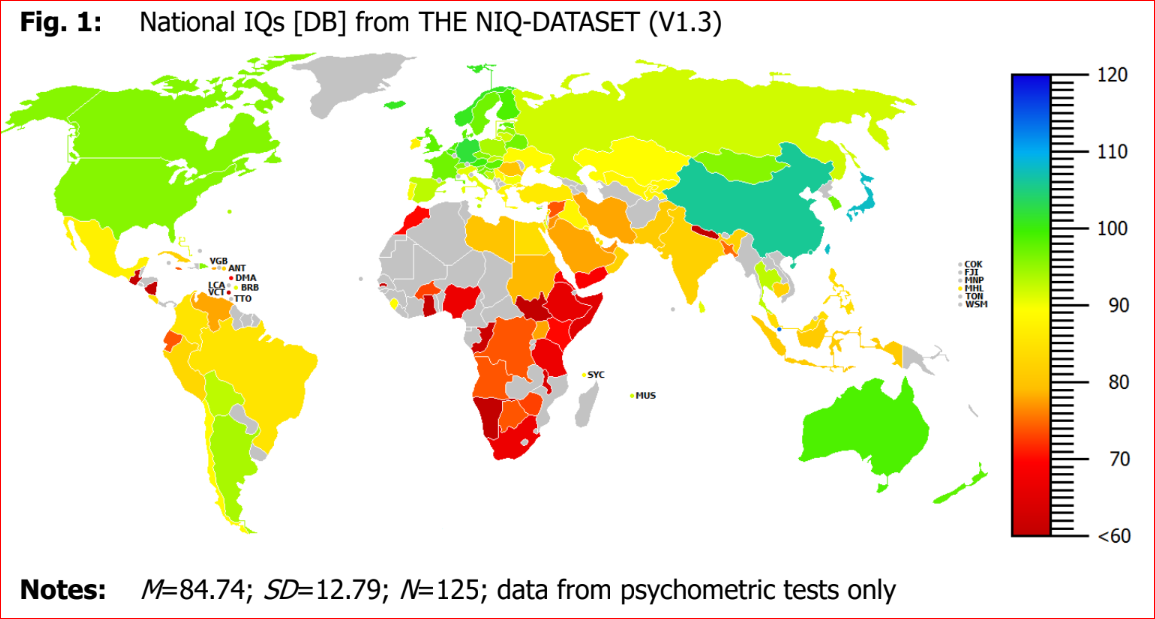
Summary
As you can see, there are indeed a number of good measures of cognitive ability, and each has pluses and minuses. However, the tests have more similarities than differences, and most children will get similar scores across tests. Whoever examines your child should put thought into picking the correct tests for him or her, much as a physician picks the correct medicine to treat certain symptoms. Keep in mind, though, that a score on an IQ test is just that—a score. It’s not a measure of someone’s ultimate potential, nor does it measure qualities such as perseverance, creativity, emotional intelligence and other skills that are ultimately important for a person’s future success.
Let us know if you liked the post. That’s the only way we can improve.
Ellen Braaten, PhD
Ellen Braaten, PhD, is executive director of the Learning and Emotional Assessment Program (LEAP) at Massachusetts General Hospital (MGH), an associate professor of psychology at Harvard Medical School, and former co-director for the MGH Clay Cente.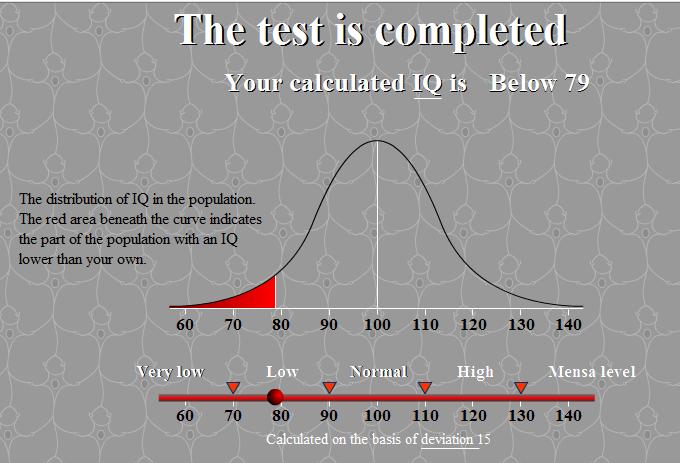 ..
..
To read full bio click here.
IQ test for children
- 1.- How to find out what level of intelligence a child has?
- 2.- Why evaluate children with an IQ test?
- 3.- IQ test for children from 2 to 3 years old
- 4.- What tests are most commonly used to measure the intelligence of children aged 2 to 3?
- 5.- BATELLE: Development inventory
- 6.- BAS II: Intellectual Ability Scale nine0003 7.- Intelligence test for children from 4 to 6 years old
- 8.- How can I find out the mental age of a child between 4 and 6 years old?
- 9.-How to calculate the IQ of a child from 4 to 6 years old?
- 10.- What is the Wisc test for children?
- 11.- How is the WISC test different from other intelligence tests?
- 12.- Who is the WISC intelligence test for?
- 13.
 - How do you know if a child is gifted? nine0029
- How do you know if a child is gifted? nine0029 - Apply the intelligence test to the baby.
- Locate the child's mental age according to the score.
- Divide mental age by chronological age and multiply by 100.
- An 8-year-old child takes an intelligence test and scores 120 points. nine0004
- According to the historical information of the test, if the average score of 10 year old children is 120. Then the mental age of the infant who passed the test would be 10 years old.
- We divide the mental age by the child's chronological age: 10/8 = 1.25
- Finally, multiply by 100: 1.25 * 100 = 125.
- The child's IQ is 125 and we can say that it is well above average.
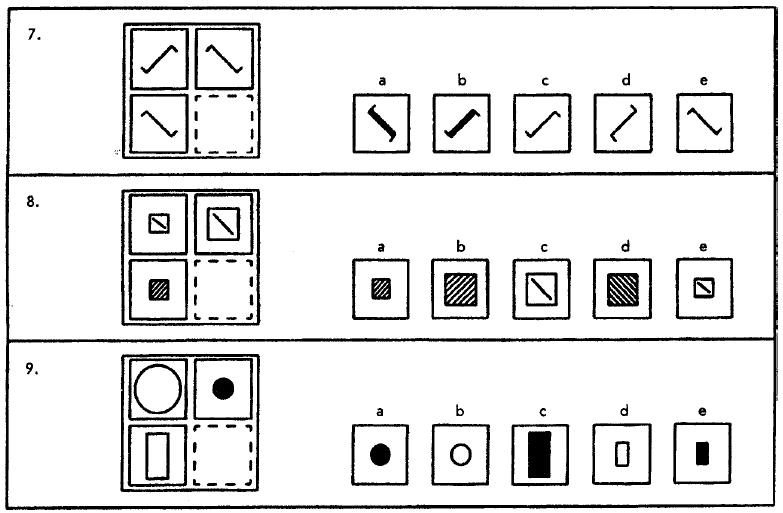 ( world average IQ: 100 ). nine0029
( world average IQ: 100 ). nine0029 - Social exclusion and
- lack of sympathy,
- Focused on developing the skills you excel at.
- Find an academic circle that best suits your abilities.
- Advise to go to the bathroom before 10 months.

- Can speak at 2 years old.
- Learns to walk at 9 months.
- Able to breed up to 4 years.
- Personal
- Social
- Adaptive
- Motor
- Communication
- Cognitive nine0029
- Structured exam.
- Observation in the classroom or at home.

- Information provided by parents, guardians or teachers.
- Intellectual skills and nine0003 Educational performance.
- Verbal and Spatial Index
- Perceptual thinking
- Non-verbal reasoning
- How smart are our children?
- There are intelligence tests for children from 4 to 6 years old ?
- You must do your best and
- has no time limits.
- Head
- Legs
- Hands
- Body
- Shoulder
- Hips
- Necks
- Eyes
- Nose
- Roth
- Hair
- Clothing
- Fingers
- Correct number of fingers
- Hands (distinguish fingers)
- Legs
- Ears
- Eyebrows
- Apprentices
- Divide the mental age determined in the previous step by the child's chronological age.
- Then multiply by 100 and get an approximate IQ.
- If the resulting IQ is greater than 100, the child's intelligence is above average.
- If it is much less than 90, it is advisable to consult a specialist to confirm the diagnosis of possible mental retardation or insufficiency. nine0004
- Verbal understanding
- Visuo-spatial abilities nine0003 Free reasoning
- Working memory
- Processing speed
- Quantitative reasoning.

- Auditory working memory.
- Non-verbal memory. nine0004
- Total capacity.
- Cognitive competence.
- Is it easy for a child to learn on his own?
- Did the child say his first word at about 6 months and his first sentence at about a year? nine0003 Was the child able to carry on a simple conversation after a year and a half?
- Did the child already know the letters of the alphabet at 2 and a half years old?
- Did he/she learn to read earlier than his/her siblings and much earlier than you expected?
- Does the child ask a lot of questions about everything around?
- Is the child very creative?
- Does the child usually have concerns about morality or justice? nine0003 Is the child very bored in class because he already knows the topics?
- Does the child easily remember information even on more complex topics?
- Does the child have a great curiosity?
- Does the child express dissatisfaction when he gets poor results / inferior to others? Does it usually turn into anger?
How can I find out what level of intelligence a child has?
To calculate the IQ of the baby :
Let's look at an example:
Remember that real intelligence tests are administered by professionals and are scientifically validated tests.
However, if you notice certain qualities or deficiencies in the mental development of your child, you can apply home intelligence tests or IQ test with pictures like those you can find on the internet.
Please note that all unofficial IQ tests will only give you an estimate of your child's IQ. This will help you understand your child's mental development and their capacity for analysis and association. nine0035
Why evaluate children with an IQ test?
In general, parents become interested in taking an IQ test of their children when they notice certain skills that indicate very high or very low intelligence.
However, one should not wait long to inquire about the mental development of a child. Because the sooner certain negative or positive skills are identified, the sooner they will be stimulated to learn.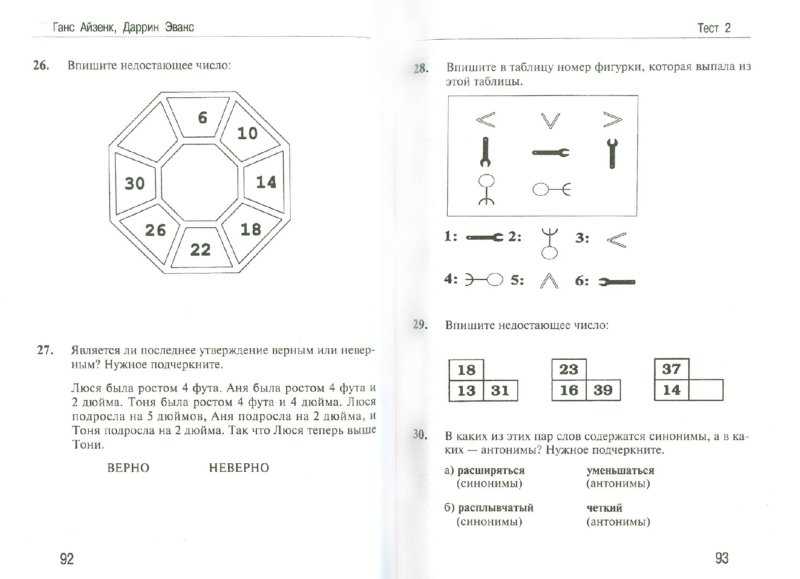
Many highly intelligent or highly intelligent people grow up thinking they are different or have a special problem .
This causes them:
Limiting their ability to make decisions and develop in society, because they do not know how people work and the world in general.
Having revealed your intellectual abilities in childhood, you could:
On the other hand, possible delays or deficiencies in mental development can also be identified.
These defects can be treated and taught in time if they are detected at an early age, giving the child a normal life.
As you can see, intelligence tests are vital, especially in childhood. nine0035
Today, with the ease that the Internet provides us with, we have no excuse for not getting information and accessing one of them on the Internet.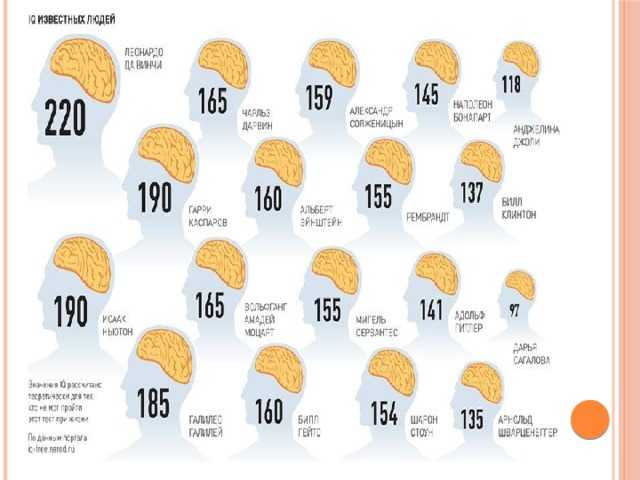
It is always nice to see how things are with our ability to analyze and associate, and this is possible from the comfort of our home.
You can solve the following intelligence test and get your IQ score in a few minutes.
IQ test for children 2 to 3 years old.
Tests with very specific characteristics other than 9 are used to assess intelligence in children 2 to 3 years of age.0033 IQ tests for adults must be used.
Paying attention to the details of how children learn is very important for early identification of big opportunities or delays that should not be the reason for labeling. but to improve their skills and obtain the knowledge required of them according to their intellect.
The first thing to consider if we want to evaluate a child's intelligence closely monitors their learning time compared to the average learning time of other children their age. nine0035
For example, if the child:
These are some of the signs that may indicate that your child is a gifted child or that it is otherwise a handicap.
What tests are most commonly used to measure the intelligence of children aged 2 to 3? nine0145
Next I will mention 2 types IQ test for measuring intelligence in children from 2 to 3 years old :
BATELLE: Development Inventory
Designed for children from 0 to 8 years old.
It measures children's skills in areas of development such as:
There are 3 ways to make a diagnosis:
BAS II: Intelligence Scale
Aimed at children from 2 years 6 months to 5 years 11 months.
It allows deep measurements:
The BAS II provides IQ results in general, but also provides us with specific intelligence indices such as:
You should be aware that the intelligence tests mentioned must be performed by a professional. If you do not have access to it, you can take the following online intelligence test Valid for children (from 8 years old), from small to large. nine0035
Intelligence test for children aged 4 to 6
We have asked ourselves many times:
Although for the application of IQ tests without leaving home, we can apply a simple test that will allow us to know the approximate IQ of our children.
Please note that this test only gives an estimate of a child's mental age at the time it is taken, but does not predict any type of evolution in the future. nine0035
How can I find out the mental age of a child between 4 and 6 years old?
The first thing we have to consider is to do it as part of the game so that the child feels comfortable and can take the exam freely.
The exam consists of asking the child to take a drawing of a person .
You should say that:
Evaluation parts list:
Once the drawing is complete, we must carefully observe and assign a point to each completed detail.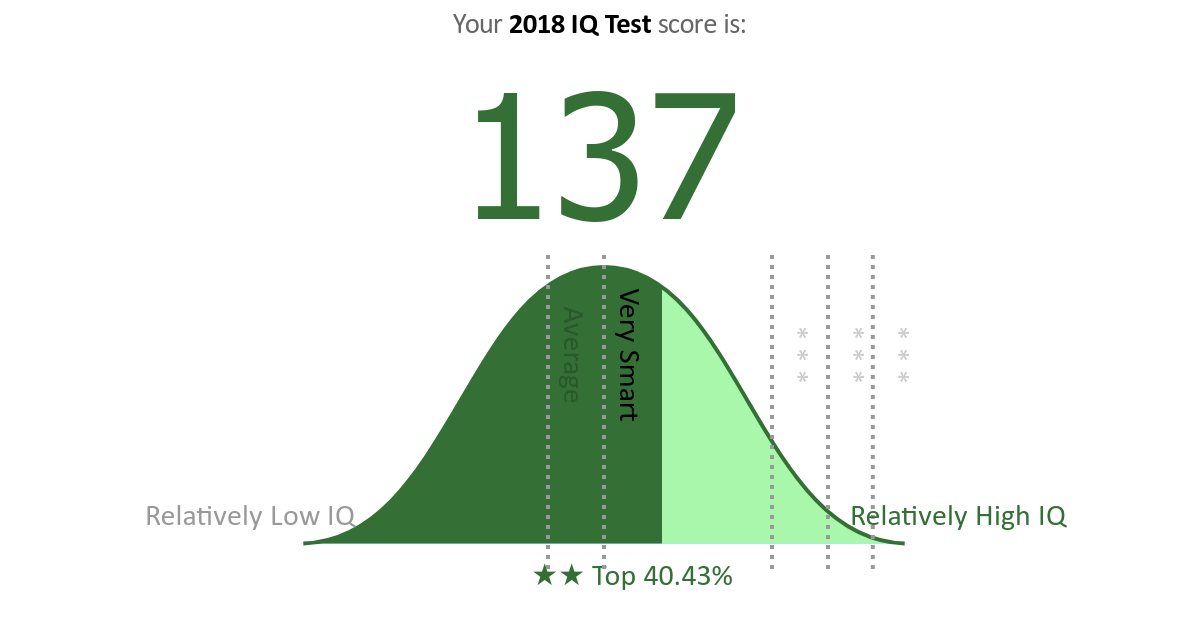
Finally, we apply the following formula to get the mental age of the minor :
Mental age = ( Score / 4 ) + 3
How to calculate the IQ of a child between 4 and 6 years old?
For calculate the IQ of a child aged 4 to 6 we must:
Please note that test results may vary depending on the state of mind of the child and the environment in which the test is administered.
You can also take the online IQ test , preferably based on images.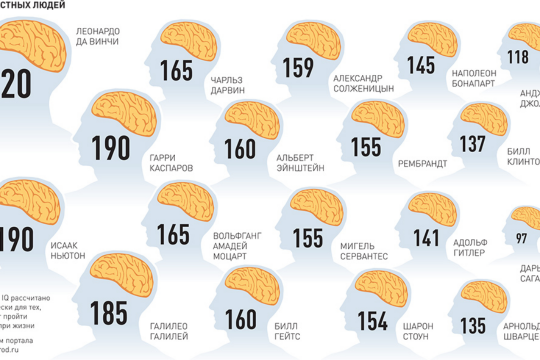
We recommend that you solve the following intelligence test, it is valid for all ages from 8 years old.
What is the Wisc test for children?
The WISC Psychological Test for Children is a 9-based intelligence test0033 Wechsler Adult Intelligence Scale (WAIS) , developed by psychologist David Wexler, to assess the intelligence and intellectual abilities of infants and/or adolescents.
How is the WISC test different from other intelligence tests?
The WISC test is characterized by scoring different indicators of primary intelligence in the form:
It also offers an overall total score including all the indices mentioned, Common IQ (CIT) .
Similarly, he gives us scores in indicators of secondary intelligence in the form:
Who is the WISC intelligence test for?
B The WISC Intelligence Test is intended for children and adolescents aged 6 to 16 years whose IQ is to be determined at their own discretion or clinical recommendation.
How do you know if a child is gifted?
People say that people are gifted when they score above 130 on an IQ test .
It is ideal to recognize the intellectual abilities of people in childhood. This way you can focus on developing the skills you excel at.
In general, many gifted people have a bad time in their early years due to high mental development. Because of this, they become incompatible with the preferences and activities of their age.
So, how can we know if a child is gifted?
The answer is with an official IQ test.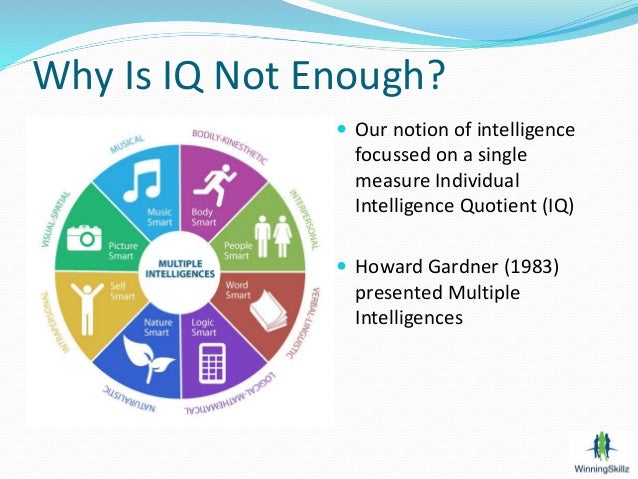 nine0035
nine0035
However, in many cases access is not easy or cheap. Therefore, before thinking about it, one must pay attention to the child and observe certain skills.
Now I will mention you 12 questions to ask yourself to identify a gifted child :
If you have already asked yourself these questions and answered yes to most of them, this is a clear sign that your child is intellectually above average compared to children of his age.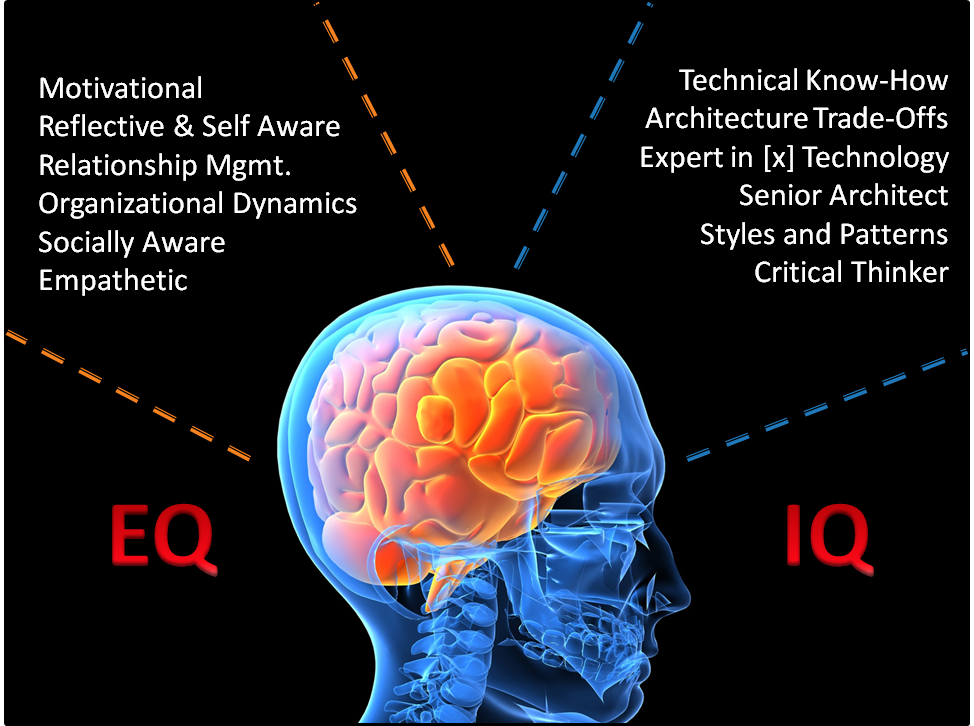 nine0035
nine0035
The next thing you can do is take an online IQ test, preferably based on images. In this way, you can assess their IQ and confirm their giftedness.
Do not forget to also stimulate him in his family and school environment so that he does not lose his curiosity and thus does not stop learning. This will help him to show and develop his high abilities.
Online IQ test for children aged 8+
Select the desired shape from the four numbered ones:
1
2
3
4
Insert a word that would end the first word and start the second. Write the word in capital letters
TEA
Solve the anagrams and eliminate the extra word. Write the word in capital letters
All other words denote dishes: plate, spoon, cup
SUITCASE
Insert the missing number
Subtract the number on the door from the sum of the numbers in the windows
11
Insert a missing word. Write the word in capital letters
1 letter of the missing word is the last letter of the previous word; 2 letter of the missing word is the fourth letter of the previous word; 3 letter of the missing word is the third letter of the next word; The 4th letter of the missing word is the fourth letter of the following word
TOAD
Fill in the missing number
Add all numbers outside the brackets
21
Continue the series of numbers
Each number is obtained by adding 2 to the previous one and dividing the result by 2
3
Solve the anagrams and eliminate the extra word. Write the word in capital letters
Write the word in capital letters
All other words denote home furnishings: table, sofa, armchair
DOUGH
Select the desired figure from the numbered ones
Circle, triangle and square can be both external and internal figures and can be black , white or shaded. Each of these signs occurs only once in a row or in column 9.0035
1
2
3
4
5
6
spot. Each rectangle has two such figures
1
2
3
4
5
6
0035
AND
Insert a word that would end the first word and start the second. Write the word in capital letters
SHOCK
Insert the missing number
The numbers in the left half of the circle are three times larger than the opposite numbers in the right half of the circle
54
Insert the missing number
In each row, the third number is the sum of half of the first number doubled second
11
Insert the missing number
The number in brackets is the difference between the numbers outside the brackets
27
Fill in the missing letters. Write capital letters with a space
Write capital letters with a space
the word DOUBT, read counterclockwise
M AND
Select the desired figure from the numbered ones
The circle can be without lines, it can have a horizontal or vertical line. And small circles can be in one of three positions. In addition, they have different hatching
1
2
3
4
5
6
Select the desired figure of six numbered
The third figure of each horizontal row consists of elements of their row, which are not common for them
1
2
2 2 2 2 2 2 2 2 2 2 2 34
5
6
Fill in the missing number
0032 Insert the missing number
Double the sum of the numbers outside the brackets
76
Insert the missing word. Write the word in capital letters
1 letter of the missing word is the last letter of the previous word; 2 letter of the missing word is the second letter of the previous word; The 3rd letter of the missing word is the fifth letter of the next word; The 4th letter of the missing word is the fourth letter of the following word
KOZHA
Insert a word that would end the first word and start the second. Write the word in capital letters
Write the word in capital letters
LAD
Solve the anagrams and eliminate the extra word. Write the word in capital letters
The remaining words indicate the types of vessels: barge, yacht, boat
SKUNS
Insert a word that would mean the same as the words outside the brackets. Write the word in capital letters
BRUSH
Insert the missing letter. Write capital letters separated by spaces
The word UNITY, read clockwise
E E
Select the desired figure from six numbered ones
There are three types of main figures, each of which has either a + or an arrow or x
1
5
3
4
5
6
Select the desired shape from the numbered
There are three types of pots, three types of stems and three forms of flowers. The flowerpot can be white, black or shaded. Each of these features occurs only once in row or column 9.0035
1
2
3
4
5
6
Insert the correct figure out of the six numbered
tires facing outward; spikes pointing inward count as -1. In each horizontal row, the last figure is considered as the sum of the previous two figures. Write the word in capital letters
In each horizontal row, the last figure is considered as the sum of the previous two figures. Write the word in capital letters
Letters 1 and 2 of the missing word are the fifth and third letters of the preceding word, respectively, and letters 3 and 4 of the missing word are the first and fifth letters of the following word
GROT
Insert a word that would mean the same as the words outside the brackets. Write the word in capital letters
SCREW
Fill in the missing number
Cube the numbers 1, 2, 3 and 4 respectively
64
Fill in the missing word
Letters 1 and 2 of the missing word are the fifth and first letters of the preceding word, respectively, and letters 3 and 4 of the missing word are the fifth and third letters of the following word, respectively. Write the word in capital letters
The rest of the words denote parts of the house: wall, roof, window
TUESDAY
Fill in the missing letter and the missing number. Write a capital letter and a number separated by a space
Write a capital letter and a number separated by a space
Letters go in alphabetical order through one alternately in the numerator and denominator. The numbers corresponding to the ordinal number of these letters in the alphabet are arranged in a similar way
F 7
Insert a word that would mean the same as the words outside the brackets. Write the word in capital letters
LIP
Fill in the missing word. Write the word in capital letters
Letters 1 and 2 of the missing word are the first and fourth letters of the previous word, respectively, and letters 3 and 4 of the missing word are the second and third letters of the next word, respectively
ROSA
Select the desired shape from the six numbered
Each row and column has three types of different balls, three head shapes, three boot shapes, and three hand positions. Those shapes and positions that are not in the first two drawings of the third row should be in the missing drawing skirts, three hand positions, three types of shoes
1
2
3
4
5
6
Select the desired figure of the six numbered
The second and third figures of each row contain one of the elements inside the first figure 90 degrees
1
2
3
4
Low level of intelligence
Based on the answers, the level of intellectual development of the child is below average.


